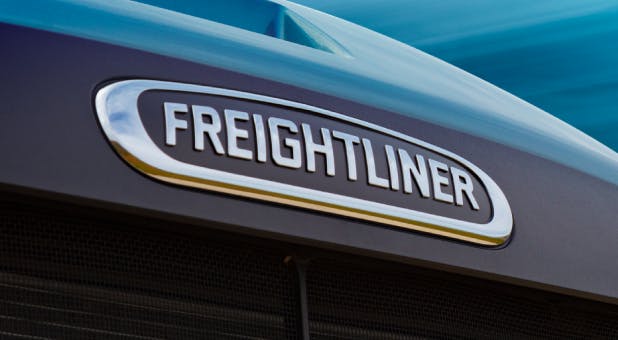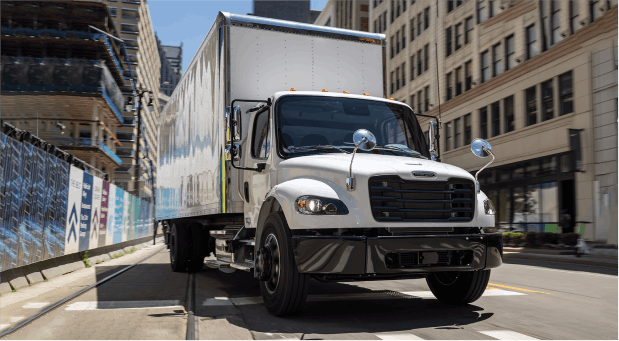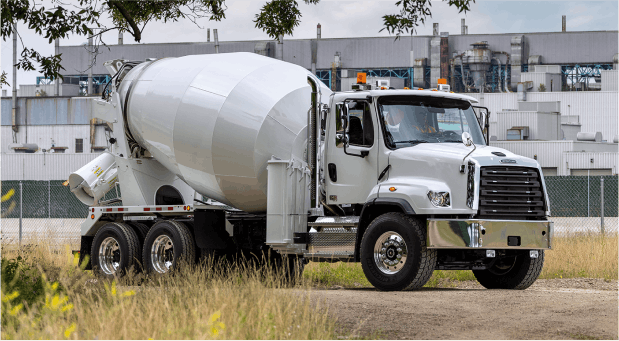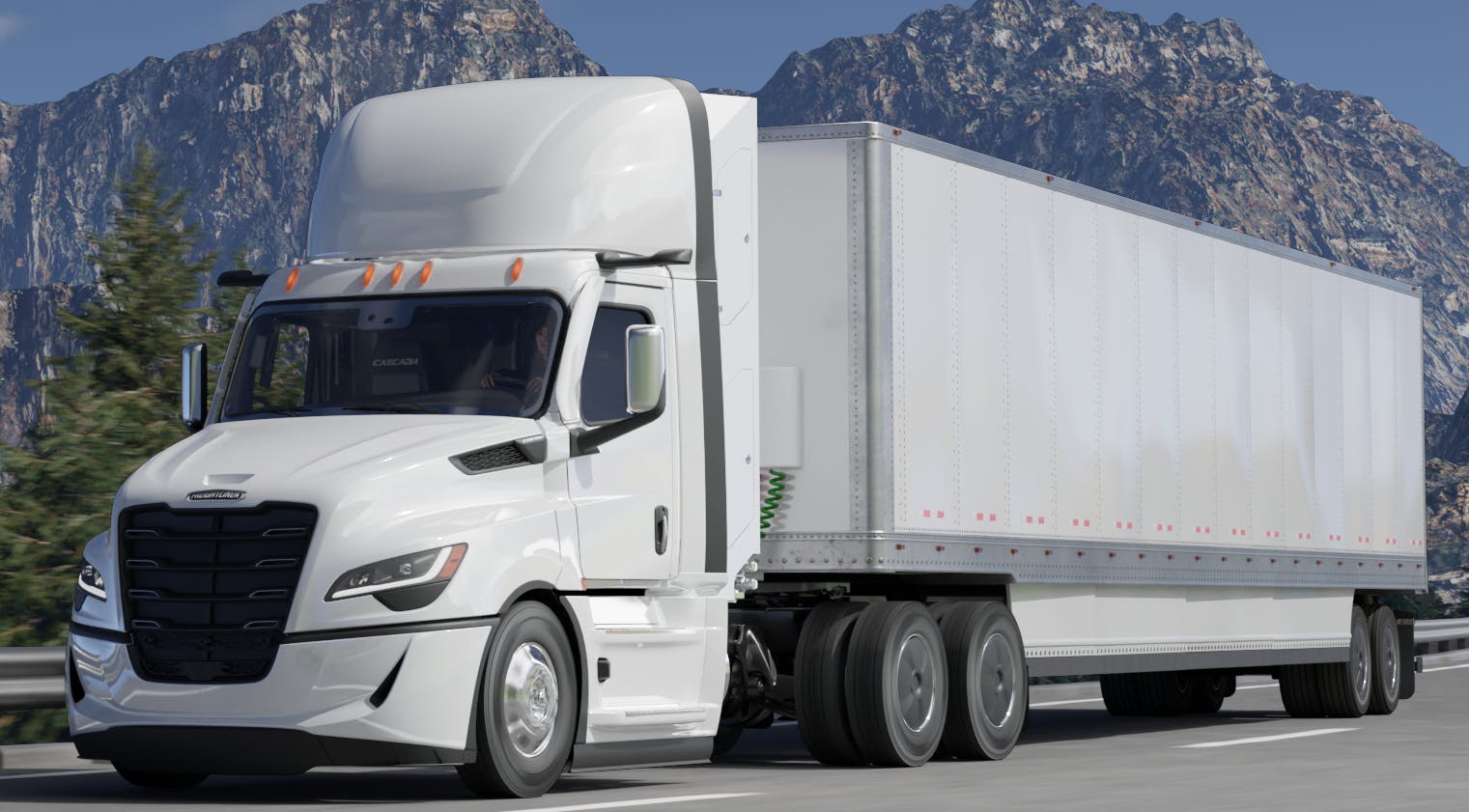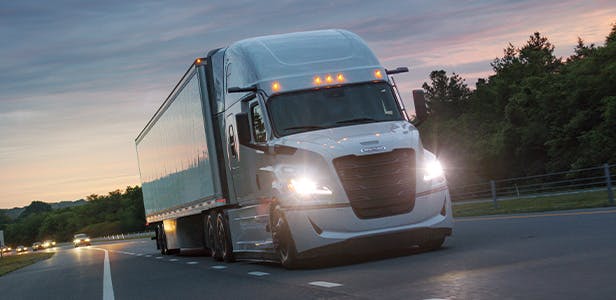Moving the Electric Needle: Smart Ways to Use Electric Trucks
Electric Trucks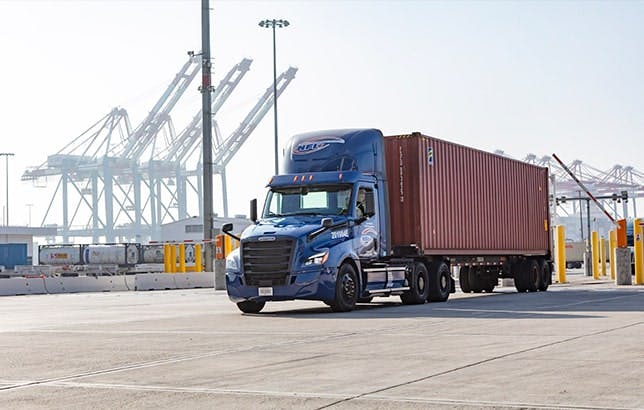
Electric trucks are powerful, efficient tools of the future – and they’re already moving real business. Let’s look at a few of the best ways to use them today.
Electric trucks are already working in real fleets to help lower carbon emissions, save fuel and improve the day-to-day experience for drivers. But how do these benefits affect the real-world goals of businesses? In many applications, they can improve them by miles.
Let’s explore how companies are using electric trucks today, so you can start thinking about how to integrate them into your fleet tomorrow.
HOW TO USE ELECTRIC TRUCKS IN YOUR BUSINESS TODAY
Battery-electric trucks continue to push the boundaries of power, torque and efficiency – but the applications in which they excel the most have a few things in common.
- Local and regional range
While electric trucks are already on the road, charging infrastructure is still developing. As a result, many electric trucks travel around 200 miles before returning to a central location to charge. However, shorter range is hardly a limitation. According to the U.S Department of Energy, two-thirds of freight across the country was shipped less than 100 miles in 2018.
- Dedicated, repeatable routes
Since electric trucks generally return to a central charging location every day, their routes tend to be more regular and predictable. With the right planning, a fully charged electric truck can be matched with just the right route – right down to the mile.
- Focusing on the short (and simple) game
Because battery-electric trucks are often used for shorter trips, drivers don’t have to take on long-haul shifts. That means a sleeper cab in an electric truck is not yet a major consideration, which makes for a more straightforward setup all around.
COMMON ELECTRIC TRUCK APPLICATIONS
There’s a lot to think about when considering electric semi trucks. But what does it all mean for the real world – and real business? Here’s how companies are using them today.
On-premises: Yard trucks
Commercial fleet electrification can be a gradual process. For example, replacing a few yard trucks – vehicles that stay in one location to move freight on-premises – with electric ones is a great way to make a small step toward your electric goals. And since yard trucks don’t travel far, charging these vehicles is as simple as it gets.
On the road: Port and rail drayage
While battery-powered trucks are well-suited for many short-haul applications, they’re ideal for keeping drayage operations simple, efficient and more comfortable for drivers. Designed for quick, one-shift trips, they’re perfect for hauling shipping containers from a port’s warehouse or a rail yard, or simply moving cargo across a city.
ELECTRIC TRUCKS IN ACTION: HOW NFI IS LEADING THE CHARGE
NFI is an international, third-party logistics provider that uses electric trucks in two big ways. Not only do they utilize more than two dozen electric yard trucks to move freight on-premises – the company has been moving real cargo with 10 Freightliner eCascadias as part of the Freightliner Electric Innovation Fleet since 2019.
Moving the needle in port drayage
Thanks to predictable, out-and-back routes, Freightliner eCascadias are ideally suited for the demands of NFI’s drayage operations. As of November 2020, NFI had completed more than 1,500 trips from the Ports of Los Angeles and Long Beach to warehouses across Southern California. And between the electric yard trucks and eCascadias, the company has covered more than 220,000 total electric miles.
Key takeaways
Beyond saving fuel and reducing carbon emissions, NFI noticed several benefits of running the eCascadias.
Happy drivers
Jim O’Leary, NFI vice president of fleet services, noted that some drivers were cautious about jumping into an electric truck for the first time – especially after driving diesel rigs for years. “Anything new is going to have some hesitation. But once they get in it, they don’t want to go back.” He attributes this enthusiasm to some of the biggest perks of driving electric trucks. “It’s the power, the smoothness of the ride and the fact that they don’t come home smelling like diesel,” he said.
Lower maintenance costs
NFI has been testing eCascadias in its fleet since late 2019, and it already has big hopes for how electric trucks could reduce service costs. The company has indicated that battery-electric trucks can help ease the strain on maintenance since they have a simpler design and fewer parts than diesel trucks as well as no aftertreatment systems.
Plenty of range
Electric trucks today are best-suited for short-haul applications. But for NFI, the eCascadia’s range has been more than enough. According to O’Leary, they haven’t had to change a thing. “The same loads [72,000 lbs.] that we’ve been picking up from the ports in our diesels are the same loads that we can pick up in the eCascadia ... We have not had one issue where we’ve run out of charge or anything like that,” he said. “We don’t have range anxiety in these vehicles, but we’re sticking with what we can do.”
Additional considerations
While commercial fleet electrification can lead to huge benefits, it still requires more planning than simply putting diesel trucks on the road. “Deploying electric trucks requires engagement with many partners and dealing with new contracts for items such as engineering and load-management software,” O’Leary said. Despite the challenges of deploying electric trucks, Sid Brown, NFI’s CEO, looks forward to massive opportunities. “I see by 2025, about 60% of our fleet will probably be electric,” he said. “We’re a big believer.”
Electric vehicle charging stations and up-front costs are key considerations for any business looking to jump into electric. We can help you figure out where you want to go – and help you get there. Our eConsulting services supporting Freightliner electric trucks offer everything from no-cost phone consultations to site visits and fully customized planning services.
Let’s get started
Contact your local dealer to learn more. We’re ready to show you the best ways for your business to move the needle with the power of electric trucks.

